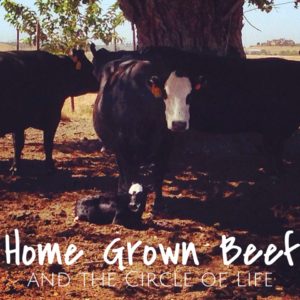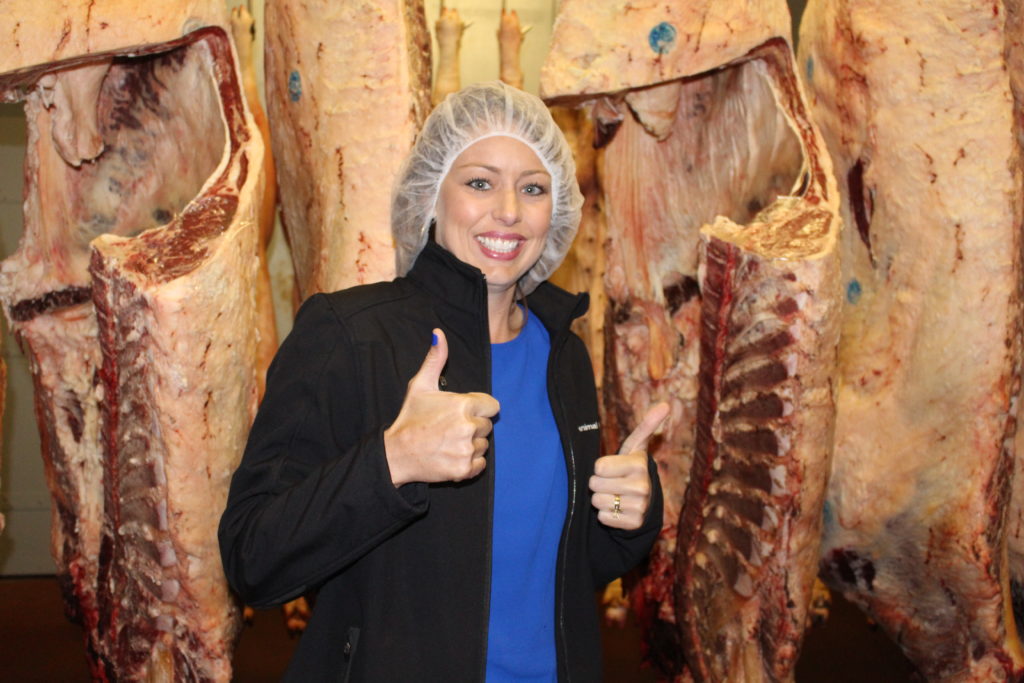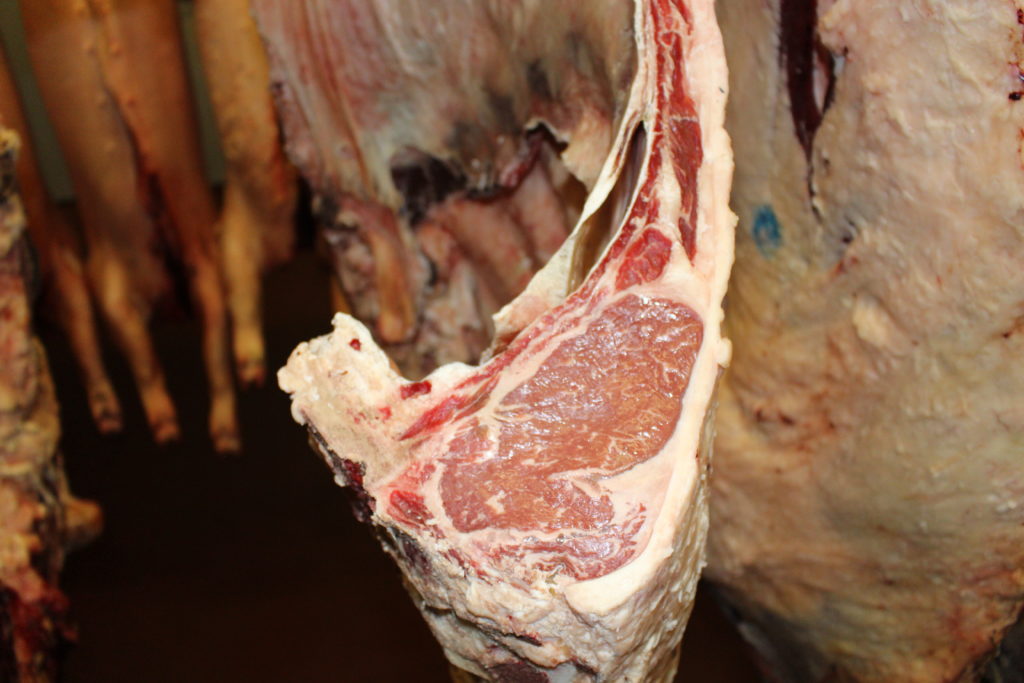
In just a few short weeks, the freezer will be overflowing with Dot Seven beef. Beef that was given the highest level of care from birth until death will nourish our bodies for a long time to come. The more I learn and immerse myself into the ranching lifestyle, the more gratitude I have. I’m so proud that my family raises safe, nutritious beef for myself and others to consume. I am proud of the quality of beef we are producing (more on that later). But, perhaps the most rewarding part of this lifestyle is my growing understanding and appreciation for the end of the life cycle. I know that must sound so strange but it’s true. As a kid, I hated the fact that cattle had to die in order for me to enjoy a hamburger or a steak. I preferred to only be a part of caring for the animals while they were alive. We can probably all agree that death is a complicated topic but that it is most definitely the circle of life. If it weren’t for my immersion into the livestock industry, I’m not sure I wouldn’t still be slightly uncomfortable with the subject.
Death sucks. There’s really no getting around that. Although, at the wise old age of 30 (ha!), I now have a different perspective on death as it relates to the beef I eat. Cows are amazing creatures. Yes they can be dirty, smelly, and possibly run you up the side of the fence when they’re trying to protect their baby calf… but in the end they give their life in the most noble way so that we may sustain ours. I truly believe cows were put on this earth to make use of the land where we cannot plant crops. As humans, we spend our lives searching for our purpose here on earth. Cows are born with a purpose. Their life directly corresponds to the quality of ours and for that I am so thankful. Because of this understanding, (that I believe most ranchers have) we at the Dot Seven assume greater responsibility to treat these animals with first-rate care the entirety of their life. We owe it to the animal just as much as the consumer.
The steer calf in the picture above was born on the Dot Seven and was the first calf of the Fall 2014 calving season. He spent the first seven months of life with his mother, was then weaned from her and moved to another field of native grass for the next six months. From there he went to the feedlot to be finished on a ration (diet) that included grains. My family prefers the taste and health benefits of grain-finished beef; the more marbling* the better!
**Warning: The pictures below this line may be graphic to some. If you do not wish to see what a carcass looks like hanging in a meat locker, this would be a good place to stop. But I really hope you don’t :)**
Since our beef was harvested, it has been hanging for a couple weeks in the meat locker. My mom and I had the chance to go check it out and fill out the cut sheet. To say we we’re excited would be an understatement. This steer yielded 780 pounds and will certainly fill the freezer and provide many nutritious meals for the family. Not only did he give us a ton of beef the parts that are not edible will not go to waste. Virtually every part of this animal will be used for something. To some this picture may be a little much to handle and that it completely fine. To us, it was a sign of all the hard work it took to produce a great product.

In case you are wondering, the blue stamp that you see is a USDA stamp that is put on the carcass once it has passed inspection. If you would like to learn more about the USDA inspection process that happens at beef plants you can do so here.
The beef hanging behind me is the exact same beef that you would purchase in the grocery store and prepare for your family at home. There were no special instructions or production methods just because this one was going in our freezer. You can be confident that the product you see in the meat case of your local grocer has been raised by families just like mine.

This shot was taken looking down on the ribeye which is the cut where the beef is graded for quality (marbling & maturity). This particular animal graded choice plus. I can’t wait to test out these steaks!
If you have any questions about this process, please feel free to drop a comment below or shoot me an email. I am certainly not an expert in the processing portion of the beef cycle but thanks to a good friend of mine, I am now more proficient on the subject.
*Marbling is what determines the quality of the beef and how it is graded. Did you know that the marbling or the intramuscular fat is what is responsible for the flavor, tenderness, and moisture? FUN FACT: This fat is comprised of Oelic Acid (simple, monounsaturated fat) which is also found in olive oil. To learn more about the health benefits of great marbling in a cut of beef check out this article here.
